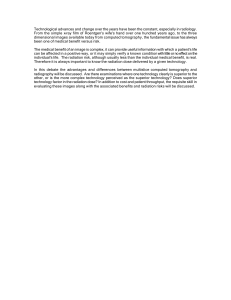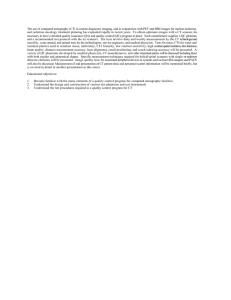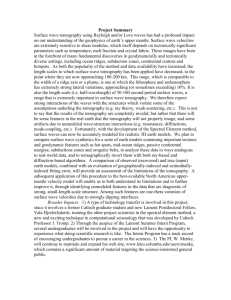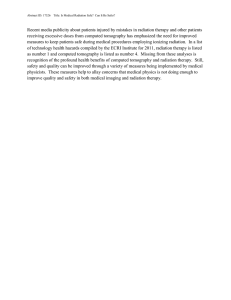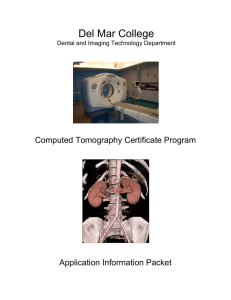AbstractID: 7898 Title: Dosimetry in Conventional and Computadorized Tomography
advertisement
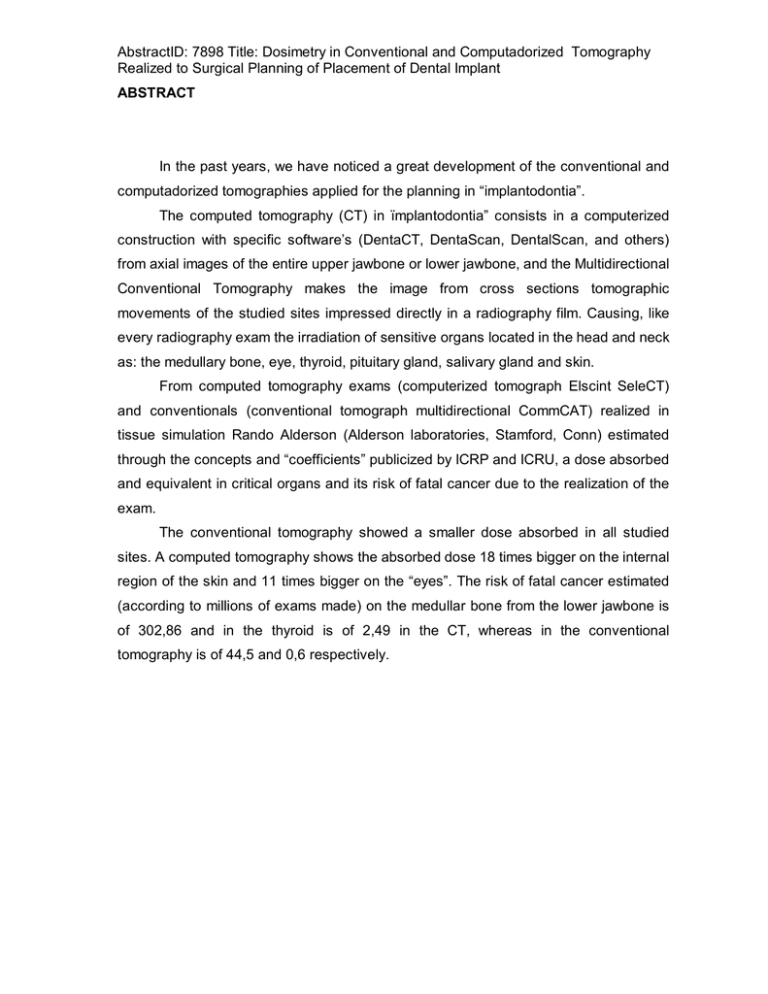
AbstractID: 7898 Title: Dosimetry in Conventional and Computadorized Tomography Realized to Surgical Planning of Placement of Dental Implant ABSTRACT In the past years, we have noticed a great development of the conventional and computadorized tomographies applied for the planning in “implantodontia”. The computed tomography (CT) in ïmplantodontia” consists in a computerized construction with specific software’s (DentaCT, DentaScan, DentalScan, and others) from axial images of the entire upper jawbone or lower jawbone, and the Multidirectional Conventional Tomography makes the image from cross sections tomographic movements of the studied sites impressed directly in a radiography film. Causing, like every radiography exam the irradiation of sensitive organs located in the head and neck as: the medullary bone, eye, thyroid, pituitary gland, salivary gland and skin. From computed tomography exams (computerized tomograph Elscint SeleCT) and conventionals (conventional tomograph multidirectional CommCAT) realized in tissue simulation Rando Alderson (Alderson laboratories, Stamford, Conn) estimated through the concepts and “coefficients” publicized by ICRP and ICRU, a dose absorbed and equivalent in critical organs and its risk of fatal cancer due to the realization of the exam. The conventional tomography showed a smaller dose absorbed in all studied sites. A computed tomography shows the absorbed dose 18 times bigger on the internal region of the skin and 11 times bigger on the “eyes”. The risk of fatal cancer estimated (according to millions of exams made) on the medullar bone from the lower jawbone is of 302,86 and in the thyroid is of 2,49 in the CT, whereas in the conventional tomography is of 44,5 and 0,6 respectively.
